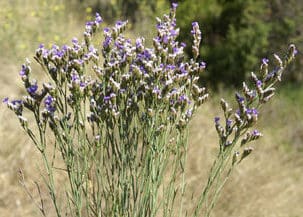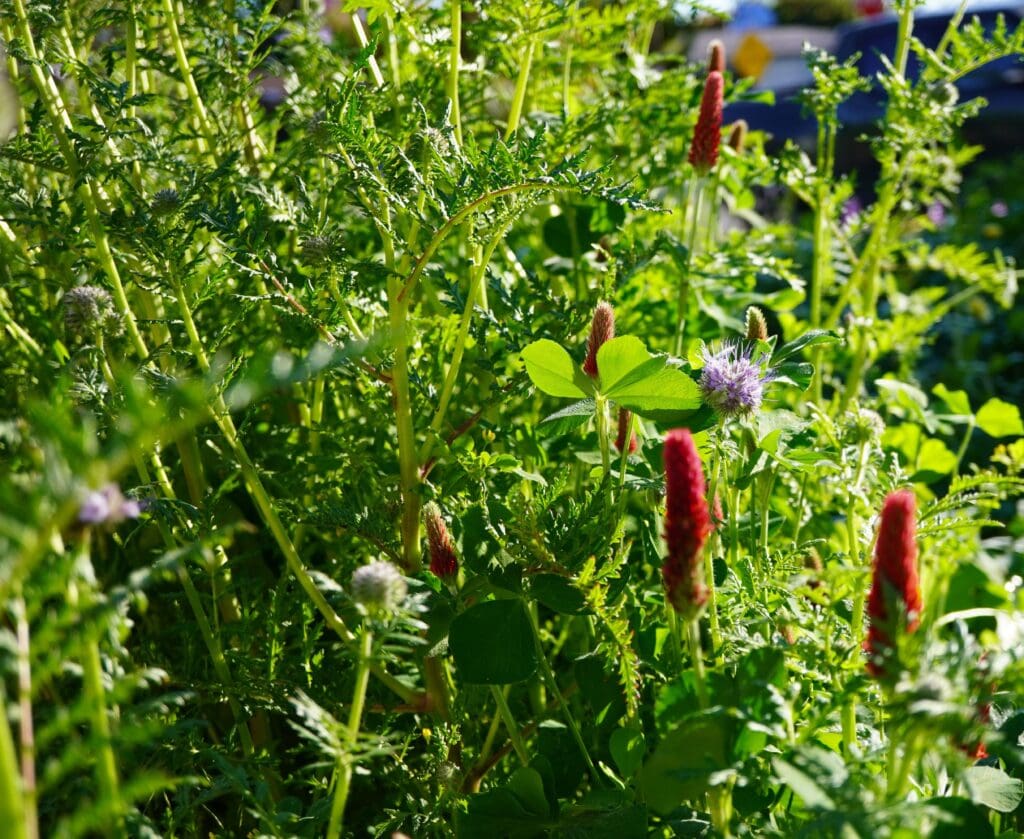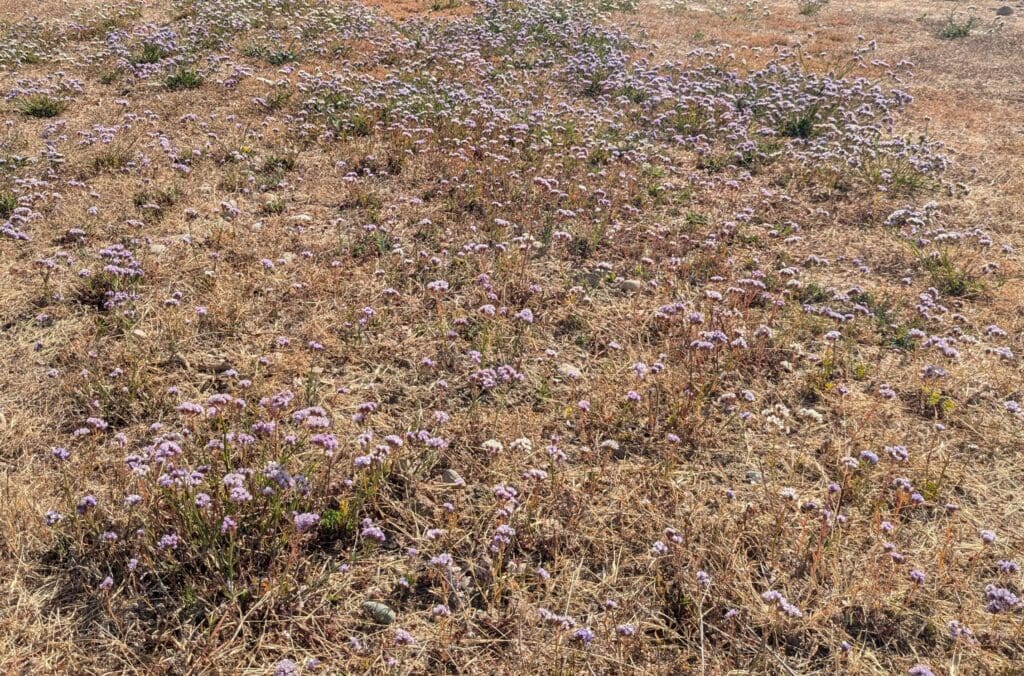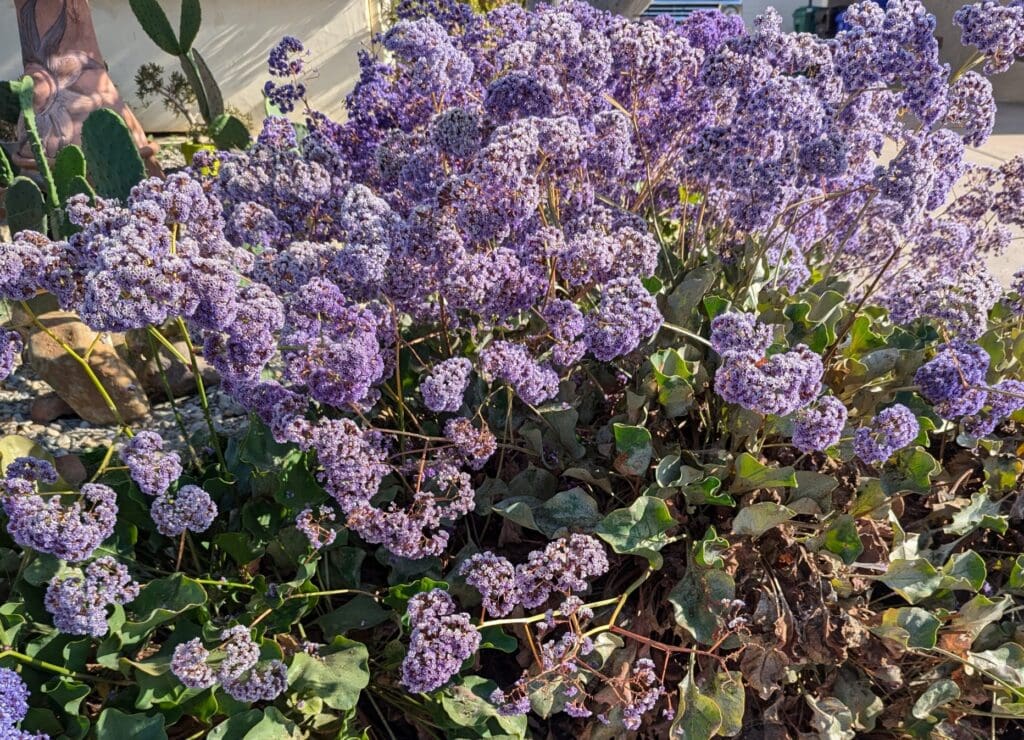
Knowing when an Ornamental might be Invasive
Choosing what to plant in your yard can have consequences far greater than the aesthetic you are trying to create. Other considerations include how much irrigation will be needed, whether you will use harmful chemicals such as pesticides and herbicides, whether you will plant a large enough area to provide the evapotranspiration that will cool your neighborhood, and whether you choose native plants. Ironically, some folks are hesitant to plant native wildflowers, shrubs and grasses because they are afraid these plants will provide habitat for unwelcome fauna – such as bats, bees, lizards and rodents. Instead, we need these functioning ecosystems for vibrant neighborhoods!
If you have been following Dwelling On Carbon, you know that we emphasize choosing seeds (or plants) that provide biodiversity and habitat, conserve water, and cool neighborhoods. Our seed mix includes many native wildflowers and grasses but it also includes cover crops that are not native to our region. These cover crops play a very important role in breaking up compaction (without the tillage that could harm the soil microbiome), as well as sourcing nutrients such as nitrogen by including legumes such as clovers and vetch in the mix. These legumes harvest atmospheric nitrogen gas and convert it to ammonia that can be utilized by plants to make organic molecules. They work this magic with soil bacteria living in their root nodules – their symbiotic rhizobium bacterial partners.
Implementing a biodiverse yard ecosystem in an urban setting is not straightforward and therefore accepting the presence of some species that are not native is key to the success.

Although nonnatives play an important role in regenerative agriculture and gardening, especially in urban ecosystems, clearly we want to promote including as many native grasses and wildflowers in our landscapes as possible to provide a habitat that supports local pollinators and other local fauna. When choosing a plant to include in your garden, first find out whether it is native to your location. This is not always simple as there may be both native and invasive/nonnative versions of the plant you are interested in. A plant that illustrates this conundrum well is Sea Lavender. This is a popular herbaceous perennial plant in Southern California gardens because it is very heat and drought-tolerant, produces a cloud-like cluster of delicate lavender-colored blooms, and works well in cut flower arrangements. There is a native version of Sea Lavender, known as Limonium californicum, but unfortunately, several nonnative species of Sea Lavender have been introduced to our ecosystems where they are becoming invasive – particularly in coastal areas and along roadsides. The story of these different species of ornamental Sea Lavender is slightly messy and meandering but interesting because it brings up what can happen when plants are brought in from exotic places for their ornamental features. Over time, these nonnative ornamental species may start to cause problems in their new ecosystems.
The featured image in this blog post (Courtesy Margo Bors, IPC) shows Algerian Sea Lavender, Limonium ramossimum, which is an ornamental escapee that is native to the coastal Mediterranean and can grow in coastal marshes and inland wetlands. This plant is especially worrisome because its seeds can retain their ability to germinate after two weeks of floating in saltwater. It is often found with a related European Sea Lavender, Limonium duriusculum, crowding out native species in our estuaries and wetlands. Both European and Algerian Sea Lavenders are listed with the Invasive Plant Council (see references below) but there are two other related species that are not (yet) listed that are also causing issues. In our local Los Penasquitos preserve, the wavy leaf Sea Lavender, Limonium sinuatum, is spreading perniciously and preventing native pollinator plants from getting a foothold. I was recently part of a volunteer crew to remove this plant in the preserve, where it has spread very extensively (see image below).

Finally, there is one more species of nonnative Sea Lavender that is most likely the one you notice when you are walking your dog around the neighborhood: Limonium perezii or Perez’s Sea Lavender. This species is also often referred to as “statice”. Perez’s Sea Lavender originated from the Canary Islands off the coast of NW Africa and seems to be the most popular ornamental species of Sea Lavender in our region — perhaps because it is one of the showiest and largest versions of this plant. Perez’s Sea Lavender is a great example of what to consider with plant choices for your garden. Right now it is not considered invasive but based on the other nonnative Sea Lavenders, this could change overnight. I have seen firsthand how plants spread from people’s backyards into our local canyons and preserves from my years of volunteering with the local rangers. Some are fairly obvious and familiar to many of us — Pampas Grass (Cortaderia selloana), Arundo (Arundo donax), and Mexican fan palm (Washingtonia robusta). It may be easy to convince yourself that planting a nonnative such as Perez’s Sea Lavender won’t be an issue if you don’t live upstream or uphill from a preserve or wetland. But it’s important to realize that with climate change, we expect to see larger storms and more runoff, so seeds from your garden can potentially travel through our storm drains to our local canyons and preserves.
You may be asking yourself whether the cover crops we use in polyculture lawns could be invasive and cause problems similar to the examples I have provided. An important distinction is WHERE plants may become invasive and the consequences that may happen as a result. Clovers CAN become invasive in lawns and meadows and this is a big reason for the diversity in our polyculture lawns compared to the popular clover lawn alternatives. The pea family species in our mix are annuals and we expect the native perennials to eventually outcompete them. We are also working with nonnative turf which is adapted to our region and is very effective at carbon sequestration. Working in an urban environment means making some compromises to achieve the ecosystem benefits that are our goals.

In conclusion, designing landscapes that provide ecosystem benefits as well as desirable aesthetics is not easy. There are luckily some great resources where you can check your plant choices. See the references below. I also recommend taking time to enjoy our local open space preserves where you can enjoy beauty, wildlife, and see native and nonnative plants growing side by side. If you are interested in volunteering with the local open space rangers, a link for the Los Penasquitos Ranger District Trail and Habitat Project is listed below.
Resorces
California Invasive Plant Council
LPRD Trail & Habitat Conservation Project
San Diego County Invasive Ornamental Plant Guide
San Diego County Plants by James Lightner, 2004 (San Diego Flora)
Tags:
